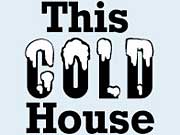 |
| Conducting an energy audit of your house is one of the first steps to take to determine how to cut down on heating costs. (Image courtesy of Heatload.com) |
Here's a list of options, ranging from the least expensive to the most expensive, as well as links to more information, to help you determine the cost and savings of each one.
RUN THROUGH A HOME ENERGY CHECKLIST
First, review this comprehensive list of things to consider improving in your home to make it more energy efficient.
• American Council for an Energy Efficient Economy
REPLACE YOUR INCANDESCENT LIGHT BULBS WITH COMPACT FLUORESCENT BULBS
Incandescent bulbs are inefficient sources of light – they generally generate far more heat than light. While they're inexpensive to buy, they also have a relatively short life. Replacing them with compact fluorescent bulbs can reduce your lighting costs by about two-thirds. Although compact fluorescents are more expensive, they last about 10 times longer and give off 70 percent less heat. They work better in some fixtures than in others.
•Energy Star has comparisons of incandescents and compact fluorescents.
•U.S. Department of Energy has a chart comparing costs and savings of various types of lighting.
SEAL AIR LEAKS IN YOUR HOME
Caulking and weatherstripping are inexpensive steps to take to reduce air leaks and drafts. Adding insulation in walls, attics and foundations is also a very good investment. In addition, many existing duct systems lose a lot of energy from leakage and poor insulation, so they also require some inspection and possibly some work.
• U.S. Department of Energy has comprehensive information on different types of airsealing.
•American Council for an Energy Efficient Economy has a summary list of how to "button up" your house.
•WarmAir.net has a calculator to show how much you would save by increasing your insulation. You'll need to know what insulation you have now.
•U.S. Department of Energy has advice on minimizing energy loss from ductwork.
TURN YOUR HEAT DOWN
Turning your thermostat down by a few degrees for several hours each day can save 10 percent of your heating bill.
•U.S. Department of Energy has background on the savings you'll see, and on how to buy and use programmable thermostats.
•WarmAir.net has a thermostat calculator to determine your savings at various temperatures.
INSTALL PROPER WINDOW COVERINGS
Some types of window treatments can reduce heat loss in the winter, and heat gain in the summer. They include window shades, draperies and awnings.
•U.S. Department of Energy has more information on various window treatments and their energy efficiency.
UPGRADE OR REPLACE EXISTING WINDOWS
Windows can cause a lot of energy loss, depending on how tightly they are sealed and how energy-efficient the glass is.
•U.S. Department of Energy has more background on upgrading windows, doors and skylights.
•American Council for an Energy Efficient Economy has advice on what to look for when buying new windows. Includes a glossary of terms.
•WarmAir.net has a cost calculator for upgrading windows.
REPLACE APPLIANCES WITH MORE ENERGY EFFICIENT MODELS
Appliances and home electronics are responsible for about 20 percent of your energy bills. Appliances being manufactured today need to meet more stringent energy efficiency requirements than those made several years ago. In some cases, buying a new appliance will save money on energy consumption in a few years.
•U.S. Department of Energy has more background on energy consumption of appliances.
•This Energy Department page has a formula to help you determine how much energy your appliances use now.
•Energy Star has a list of Energy Star rated appliances, designated because of their energy efficiency.
UPGRADE OR REPLACE YOUR HEATING OR COOLING SYSTEM
Heating and cooling your home account for about 56 percent of your energy bill each year. If you have an older, less efficient furnace, you could save a substantial amount of money over time by installing a high-efficiency model. The same is true for air conditioning units for summer cooling.
•U.S. Department of Energy has background on various types of heating and cooling systems.
•Heatload.com has a calculator to help you determine your home's heating and cooling needs.
•WarmAir.net has a comparison of the cost of different types of heating fuel.
CONVERT TO 'GREEN' TECHNOLOGY
Some environmentally-friendly energy systems can be installed in individual homes and businesses, such as solar power. Most utilities also offer their customers the option of signing up for 'green power,' electricity that is generated from renewable energy sources, such as solar, wind, geothermal, and biomass.
•Environmental Protection Agency has background on Green Power electricity.
•EPA has a Green Power locator in Minnesota.
• Minnesota Renewable Energy Society
•Minnesota Commerce Department has background on solar energy in Minnesota, including consumer guides, tax incentives and rebate information.
•Database of State Incentives for Renewable Energy, or DSIRE has a comprehensive list of incentives for renewable energy in Minnesota.




